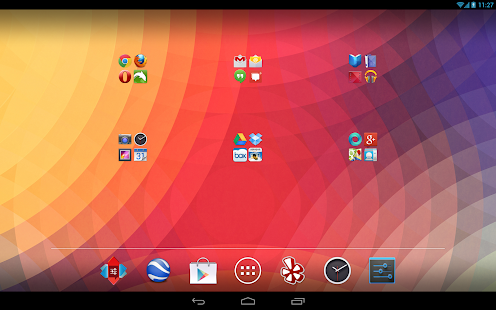Is your android smartphone getting slow? Here are some tips to speed up your android phone.

Android smartphones are found almost everywhere, and they range from low to high end smartphones. All of them will slow down with time; this is why it's important to maintain your smartphone's smoothness by following the few easy-to-do steps mentioned in this article.
1. Update your smartphone firmware:-
The firmwares fix some lag, bug, and other issues that you may not be aware of. Such issues crop up with reasonable frequency, so updating regularly will ensure the best performance for your phone.

2. Check the internal memory space:-
A low internal memory might be the reason behind any severe lag that your phone is experiencing.

3.Search the Play Store for useful applications:-
Android smartphones are found almost everywhere, and they range from low to high end smartphones. All of them will slow down with time; this is why it's important to maintain your smartphone's smoothness by following the few easy-to-do steps mentioned in this article.
1. Update your smartphone firmware:-
The firmwares fix some lag, bug, and other issues that you may not be aware of. Such issues crop up with reasonable frequency, so updating regularly will ensure the best performance for your phone.

2. Check the internal memory space:-
A low internal memory might be the reason behind any severe lag that your phone is experiencing.
- Move your media (pictures, mp3 files, videos, and so forth) to the external memory, usually an SD card.
- Some low-end and mid-range smartphones might already have low internal memories, in which case, moving your files to the SD card.
3.Search the Play Store for useful applications:-
- For older phones, an auto task killer: Kills chosen applications every 'n' seconds or minutes. This frees up some RAM memory, thus the phone will run faster.
- A good antivirus application: Scans your phone for any possible viruses and malwares. These usually slow down your phone.
- A start up manager: Allows you to stop number of applications from starting up automatically when the phone boots up.
- Juice defender application: Gives your phone more battery juice by stopping services and applications.
- A cache cleaner (could be automatic, too): Cleans up some cache from the mobile's memory.
- An Apps to SD card application: Allows you to move some applications to the SD card (if you have one inserted). This also speeds up the phone.
- Spare parts application: Gives you some more settings to configure in your phone, such as a faster window and transition animation.
4.Install a New App Launcher:-
Your phone’s app launcher controls your desktop, lock screen apps menu, and other critical parts of the UI. Though every Android phone comes with its own preloaded app launcher, you can install a third party launcher that will not only change the look and feel of your device, but also speed the time it takes it to navigate around the OS. (list of Best Launcher).

5.Uninstall unused applications:-

6.Root the phone:-
Rooting (what is rooting) gives you additional options to do with your phone. Although rooting is a risky solution, it is not as risky as it used to be. Unsuccessful rooting process might brick your phone (i.e., it will malfunction). In addition, a successful root will void your warranty. However, you can always unroot the phone (and you will restore your warranty, as the manufacturers cannot tell if you rooted your phone before or not). Here's a list of things that you can do after rooting your phone:
Your phone’s app launcher controls your desktop, lock screen apps menu, and other critical parts of the UI. Though every Android phone comes with its own preloaded app launcher, you can install a third party launcher that will not only change the look and feel of your device, but also speed the time it takes it to navigate around the OS. (list of Best Launcher).
5.Uninstall unused applications:-

6.Root the phone:-
Rooting (what is rooting) gives you additional options to do with your phone. Although rooting is a risky solution, it is not as risky as it used to be. Unsuccessful rooting process might brick your phone (i.e., it will malfunction). In addition, a successful root will void your warranty. However, you can always unroot the phone (and you will restore your warranty, as the manufacturers cannot tell if you rooted your phone before or not). Here's a list of things that you can do after rooting your phone:
- Overclocking your phone's processor. This will ultimately speed up your phone, but will eat up more battery juice than before.
- You can also install a custom ROM. The ROM is basically the version of android installed on your phone. A custom ROM is not an official one, but some of them are better. While this might solve many of your android smartphone problems, including lag and having a newer version of android, it is a very advanced, risky and not a recommended solution, because sometimes the custom ROM might not be stable, or might contain bugs and missing features that are found in the official ROM.
- The ability to delete unwanted pre-installed applications. In case you wanted to delete some applications, notice two things here:
- Download a backup application, such as Titanium Backup to back up the application before deleting it (in case you wanted to restore it later).
- Be careful not to delete any system application, like the launcher or the status bar.
- Rooting also gives you access to more advanced applications, like root call blockers, normal and notification ads blockers and root memory managers. The root memory manager is usually better than the auto task killer application

.png)
Howdy exceptional website! Does running a blog similar to this take a large amount of work? I have no understanding of coding, but I had been hoping to start my own blog in the near future. Anyway, should you have any ideas or tips for new blog owners please share. I understand this is off subject, however, I just had to ask. Thanks a lot! More tips here: Top Choices Of Encryption Software & The Dangers Of How To Encrypt A Password For Freeing Too Much.
ReplyDelete